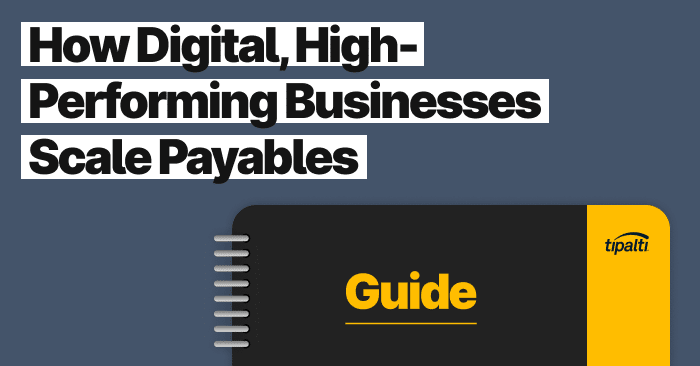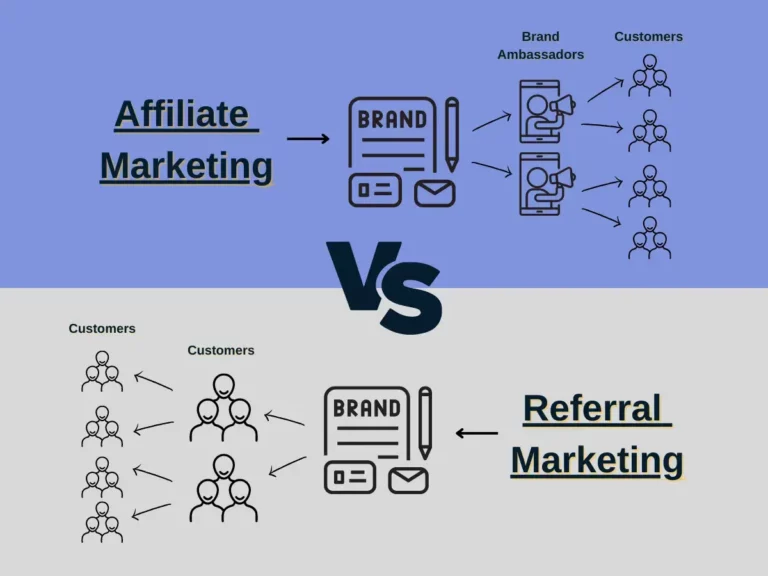
Tired of dealing with complex and tedious payables challenges? See how high-performing digital businesses are scaling payables.
Fill out the form to get your free eBook.

These businesses are often multi-sided—external partners make up much of their offering. Whether they’re content creators, influencers, developers, artisans, gig workers, or suppliers, digital-first businesses rely on partner relationships to be successful. In our eBook we examine how growing, overachieving digital-first businesses are dealing with payment challenges. Download to gain insight on: – Payment communications – Paying in local currency – Offering optimal choices in payment methods during onboarding – Reducing operational friction – Enhancing working capital
Humans are social creatures and when we are happy with a purchase, we become influencers. That’s the magic with word-of-mouth marketing. Existing customers support your new ones.
Every day in the U.S., there are approximately 2.4 billion brand-related conversations. The New York Times found that 65% of all new business comes from referrals.
It’s a marketing channel that shouldn’t be skipped. In this ultimate guide, we’ll look at what a referral marketing program is, prime examples, how can you automate it, the best tools, and why it matters.
What is Referral Marketing?
Referral marketing has boundless potential. It’s the method of promoting products/services to new customers with existing channels. This is done through people who have wholly bought into the brand.
A successful referral comes from word-of-mouth marketing and although it sometimes happens spontaneously, companies can influence it through appropriate marketing strategies with a target audience.
How Does a Referral Marketing Program Work?
In a referral marketing program, individuals are encouraged and rewarded based on the actions they take as a referral. This can include recommending products or services on e-commerce or social media pages, product reviews, and even offline methods like events, conferences, or pop-ups.
An e-commerce referral marketing program is a means of incentivizing current customers to refer new customers to the site. When the referred customer makes a purchase, the current customer is rewarded with a credit, discount, gift, referral rewards, or other valuable offers. This leads to happy customers all around!
When a brand ambassador joins a referral marketing program, they receive a unique code or referral link to share with their network. You can then use referral program software to track the activity of a customers’ code or link. If someone purchases using it, the referrer will earn a reward. This is a simple explanation of how referral marketing works.
Different Types of Referral Programs
There are three main types of referral programs: direct, reputation, and incentivized referrals.
Direct Referrals
Direct referrals happen when your existing customer base helps to create brand awareness with little to no marketing efforts. It’s the most traditional form of referral marketing, as well as the most authentic. There’s no incentive, giveaways, or commission payments. The customer is just genuinely happy with your business.
Reputation Referrals
Reputation-based referrals happen when a brand has such a strong reputation, people are confident referring your high-quality products/services. This can occur even before someone has had their own customer experience.
This isn’t necessarily the easiest way to get these types of referrals, especially for startups and SMBs. These referrals typically happen as an indirect result of having a strong reputation by providing great products and services. You’ll also need to shoot for a high rate of customer retention.
Incentivized Referrals
The most popular referral type is incentivized. In this model, a person has a reason to refer your products to their audience. This can be in the form of a discount, cash kickback, or other reward when the referral makes a purchase or becomes a subscriber. For all the ways to pay and general pricing, read more on influencer payments.
For some referral programs, incentives are twofold. Businesses can choose to reward both the referrer and new customer for using the program. For example, you can offer a $15 coupon code for referred customers to use on their first purchase, while the referrer receives extra points or money off their next order. Brands that are known for twofold referral marketing include PayPal, Uber, Instacart, Dropbox, and Tesla.
Prime Examples of Referral Marketing
Word-of-mouth marketing is the principle behind content going viral. An example of a successful referral program in action is the Old Spice commercials with Isaiah Mustafa.
Originally released just on the YouTube platform, they were so funny that people told their family and friends, and shared them like crazy.
It resulted in the fastest-growing online viral referral marketing campaign in history and racked up 23 million+ views in just 36 hours. The traffic pushed their conversion rates through the roof. It increased sales by 103% for the Old Spice brand and forever changed the way they approached marketing and customer acquisition. Potential customers became loyal customers overnight because of a simple referral marketing strategy.
Referral vs Affiliate Marketing: What’s the Difference?

Although the functionality of referral and affiliate marketing is similar, there are also some key differences. While both methods rely on incentives to drive new customer revenue, the underlying strategy and techniques significantly vary.
The main difference between the two marketing tools is that affiliate marketing focuses on brand advocates to send customers to your business for a flat fee. You can find affiliates through an affiliate network, online marketplaces, and social media.
The number of referrals you receive through your affiliate marketing program should be tracked and affiliates awarded accordingly. This is why the strategy is closely related to ecommerce, SaaS, and online business.
Referral marketing is more cost-effective and relies on rewarding current customers to invite their friends and family to try your product/service. Unlike affiliate marketing management, referrals are easier to find and more authentic. As long as your product is stellar and customer support attentive, the best referrals will happen naturally.
There are many distinct nuances between affiliate and referral marketing that range from consumer motivations to digital marketing tactics and overall market/product fit.
How to Develop a Referral Program
When word-of-mouth marketing is structured by a brand, it becomes a referral program. It’s a deliberate and systematic way to reward people for speaking about your business. To get more people interested, an incentive to “speak up” is offered. This can be a discount, gift, cash, etc.
It should be duly noted, even with incentives involved, a customer referral program will only work when people are genuinely happy with your product/service. A small business should ensure they are offering top-quality items to satisfied customers before ever considering a referral campaign.
Doing the Research on Referral Marketing
A digital marketing referral program can only be implemented with proper research. It’s there to help drive profits up while keeping costs low. Your initial discovery should uncover what customers really want. If your referral incentives are worthless to the existing customer base, your marketing plan will fall flat.
The beginning research can look at a variety of things like buying habits, preferred products or services, times of day/week/month sales happen, etc. This will help determine the various incentives that will work on your customer base.
Surveying customers is another effective way to cut to the chase. Many of these surveys are positioned to simply ask people what kind of rewards and incentives they prefer. This takes the guesswork out of creating a referral program.
A referral partner program is complex, yet can generate tons of new customers. A business posts a product or service from another brand on its site. They send prospective leads to the seller’s site through their homepage. Partners also use other media like landing pages, blogs, and social channels to refer people.
Employee Referrals
Employee incentive programs also exist. They are often centered around recruiting, but can also align with particular marketing campaigns. In fact, these types of programs are one of the most underutilized forms of compensation and benefits packages for employees in any industry.
Tools for Referral Marketing
To establish an effective program, a business needs the right tools. Referrals must be credited and measured in a multitude of channels. Otherwise, there is no real way to determine a successful referral.
Online and social media marketing is one key strategy for spreading the word. Email marketing is another great method. Follow-up activities to track the success of these campaigns should be implemented early on to drive smart decision-making. Then, concentrate efforts on the strategies that generate the most referrals.
The best tools for referral marketing include automation. The more you can use mechanized tasks to track referrals, monitor campaigns, and pay influencers, the easier it becomes to take advantage of this form of marketing.
Can You Automate Referral Marketing?
The first step in automating a referral marketing program is by using referral marketing software. There are programs specifically designed for a business to build on this marketing infrastructure.
Automating referral marketing means a company can develop reward programs and post to target markets through Google and LinkedIn. Other key advantages include:
- Automate review generation campaigns
- Track and fulfill rewards to referrers
- Provide templates to maximize automation
- Measure performance of referrers in real-time
- Detailed analytics and reporting
The right software helps to curb repeatable processes and create a consistent look and feel for your referral program.
How do companies with multiple partnerships scale payables?
It starts with good communication, working capital, and currency. Learn more about it in our ebook: How Digital, High-Performing Businesses Scale Payables.
Why Referral Marketing Matters
Referral marketing has been rated one of the most effective tactics used by marketers at all stages of the sales funnel. That’s because new customers gained through referrals, already have pre-established trust in your brand.
The fact is, personal recommendations are the primary driver of consumer purchase decisions at every stage of the buyer lifecycle, for the majority of industries and product categories.
Research shows that:
- 18% of Gen X consumers use word of mouth as their main source of brand discovery.
- People are 4 times more likely to buy when recommended by a friend.
- The lifetime value is 16% higher for a new referral customer.
- 92% of people trust referrals from friends.
- 77% of consumers are more likely to buy a new product when learning about it from family or friends.
Referral marketing is simply a more trustful means of gathering information before buying. A potential customer can do all the research in the world, but if their mom tells them to go with another brand, it’s as good as gold. That’s how powerful word-of-mouth marketing is above anything else. Everyone listens to their mother and it’s safe to assume friends and family won’t lie to you.
However, a brand is not left to flap in the wind or cross its fingers and wish for referrals. There are things you can do to speed the natural process along. A company can tap into the power of testimonials through strategic referral marketing. This places a structured business process over the timely strategy of referral marketing, and optimizes the lifetime value of your offering.
While only 39% of marketers use this referral marketing regularly, 43% of those people acquire more than 35% of new customers with it. In other words, developing a referral marketing program is a powerful strategy that will continue to bring in new customers, drive revenue, and lead to a more successful rate of retention.
